Is the Fed Monetizing the Debt?
Some of us have been surprised at how low the yields on Treasury debt continue to remain, despite the government’s explicit and implicit promises of future deficits. Given all the shenanigans, I have suspected that somehow the Federal Reserve has been buying much more of the Treasury’s bonds than we are being told.
In this context I read with great interest a recent analysis from Zerohedge [.pdf] that claims the government’s own figures show that huge amounts of new Treasury debt has fallen into an accounting black hole:
So who really picked up the tab? To our surprise, the only group to actually substantially increase their purchases in 2009 is defined in the Federal Reserve Flow of Funds Report as the “Household Sector”. This category of buyers bought $15 billion worth of treasuries in 2008, but by Q3 2009 had purchased a whopping $528.7 billion worth. At the end of Q3 this Household Sector category now owns more treasuries than the Federal Reserve itself.
So to summarize, the majority buyers of Treasury securities in 2009 were:
1. Foreign and International buyers who purchased $697.5 billion.
2. The Federal Reserve who bought $286 billion.
3. The Household Sector who bought $528 billion to Q3 – which puts them on track [to] purchase $704 billion for fiscal 2009.These three buying groups represent the lion’s share of the $1.885 trillion of debt that was issued by the US in fiscal 2009.
We must admit that we were surprised to discover that “Households” had bought so many Treasuries in 2009. They bought 35 times more government debt than they did in 2008. Given the financial condition of the average household in 2009, this makes little sense to us. With unemployment and foreclosures skyrocketing, who could afford to increase treasury investments to such a large degree? For our more discerning readers, this enormous “Household” investment was made outside of Money Market Funds, Mutual Funds, ETF’s, Life Insurance Companies, Pension and Retirement funds and Closed-End Funds, which are all separate reporting categories.
So that’s rather odd, right? But then you read this and start to get queasy:
This leaves a very important question – who makes up this Household Sector? Amazingly, we discovered that the Household Sector is actually just a catch-all category. It represents the buyers left over who can’t be slotted into the other group headings. For most categories of financial assets and liabilities, the values for the Household Sector are calculated as residuals. That is, amounts held or owed by the other sectors are subtracted from known totals, and the remainders are assumed to be the amounts held or owed by the Household Sector. To quote directly from the Flow of Funds Guide, “For example, the amounts of Treasury securities held by all other sectors, obtained from asset data reported by the companies or institutions themselves, are subtracted from total Treasury securities outstanding, obtained from the Monthly Treasury Statement of Receipts and Outlays of the United States Government and the balance is assigned to the household sector.”…So to answer the question – who is the Household Sector? They are a PHANTOM. They don’t exist. They merely serve to balance the ledger in the Federal Reserve’s Flow of Funds report.
Now it’s true–as Robert Wenzel says in his pooh-poohing of this report–that the terminology is inaccurate. For one thing, it’s not really clear that this would be a Ponzi scheme, and for another, the Household sector obviously exists. Also, I had trouble following their argument, because they kept switching between fiscal and calendar years, and I wasn’t sure that they themselves were keeping the distinction straight.
Even so, I think Wenzel is quibbling over the authors’ use of headline grabbing vocabulary, when their underlying analysis (assuming it is accurate) is quite startling. It’s true that we might expect households to load up on Treasurys because of the crisis, but wouldn’t you expect them to do so through MMFs, Mutual Funds, ETFs, etc.?
Wenzel also says this: “In short, the Fed has been conducting business as usual, printing money, aka counterfeiting. It is highly unlikely they have attempted to cook the books when they have willingly reported the trillions in reserves they have otherwise pumped into the system. It makes no sense.”
Of course Wenzel is right in the grand scheme of things, but I think he is being a bit too glib here. Even the average investor, who doesn’t even know how a gold standard works and thinks money is supposed to be pieces of paper, understands the danger in the Fed “monetizing the debt.” Up till now, the Fed officially says that its purchases of Treasury debt are only to achieve its goals of monetary policy.
But if the average investor starts to think that the Fed is buying more Treasury debt because Obama needs to run a bigger deficit, then the fat lady needs to warm up her voice. At that point, even the dullest of financial analysts will realize, “Wait a minute, they’re just printing up new dollars to pay their bills! Prices will surely rise.”
Last point: The Zerohedge report says that in 2Q 2009, the Fed (through its “quantitative easing”) purchased 48% of the new Treasury debt issued! I hadn’t realized it was so high.
Eh, maybe Wenzel is right: If worldwide investors can see what’s right in front of their faces and not bat an eye, maybe the Fed has no reason to hide anything. Bernanke could say, “My parametric estimation leads me to conclude that a sustained yet modest recapitalization of my personal checking account by $1.8 million per week will be vital to achieving the Federal Reserve’s dual mandate of vibrant economic growth and low price inflation.”
Thomas Schelling: Nuclear Weapons Are Like the Log-Plume Ride…
…the anticipation is scarier than the realization (HT2MR):
In summary, a “world without nuclear weapons” would be a world in which the United States, Russia, Israel, China, and half a dozen or a dozen other countries would have hair-trigger mobilization plans to rebuild nuclear weapons and mobilize or commandeer delivery systems, and would have prepared targets to preempt other nations’ nuclear facilities, all in a high-alert status, with practice drills and secure emergency communications. Every crisis would be a nuclear crisis, any war could become a nuclear war. The urge to preempt would dominate; whoever gets the first few weapons will coerce or preempt. It would be a nervous world.
Now before you lecture me on unstable equilibria in the comments, please realize I am objecting not to Schelling’s overall conclusion–that the desire to ban nuclear weapons overlooks many strategic considerations–but rather I am pointing out that the particular argument above is silly.
Bernanke Will Be Revered By Future Fed Chairs
Afraid to ask Congress* last year for the authority to issue the Fed’s own debt to the public, Bernanke decides it’s better to seek forgiveness than ask permission:
The U.S. Federal Reserve on Monday pressed ahead toward the creation of a new mechanism it says could be used to withdraw money from the banking system once policymakers decide to tighten monetary policy.
The program, called the term deposit facility, would allow financial institutions to earn interest on loans of longer maturities to the central bank. The Fed already pays interest on banks’ overnight reserves.
“Term deposits would be one of several tools that the Federal Reserve could employ to drain reserves to support the effective implementation of monetary policy,” the Fed said in a statement that was the Fed’s first detailed proposal for the new facility.
Rates on term loans, whose maturity would likely range between one and six months and would not exceed a year, could be determined via competitive bidding at auction, the Fed said. They would be available only to financial institutions eligible for federal deposit insurance, not the general public. Once lent to the central bank, the money cannot be withdrawn.
Excess Problem
In its effort to battle the worst financial crisis since the Great Depression, the Fed has deployed an extraordinary array of emergency measures, leading to a surge in outstanding credit to the banking system to more than $2.2 trillion.
The amount of money sloshing around has fueled concern about the possibility of high inflation. Withdrawing the reserves at just the right time is seen as crucial to keep consumer prices under wraps.
“They have a big problem with excess reserves and this is one of the ways to deal with it,” said Raymond Remy, head of fixed-income at Daiwa Securities.
…
At the height of last year’s financial meltdown, the Fed had been discussing going to Congress to request the authority to issue its own bills. The term deposit facility achieves a similar purpose, but can be undertaken within the Fed’s existing authority and does not require congressional approval.“This is more of a politically acceptable way of getting the same thing done,” said Tom Simons, money market economist at Jefferies.
Those readers who have read my opinion on the “tool” of paying interest on overnight reserves can probably guess what I think of this: At best it simply pushes back the problem, and only for six months to a year. Really, this isn’t too hard, and I am astounded that nobody says this except in non-mainstream articles or in comments on official news stories. How in the world is it a “tool to drain liquidity,” to implement a strategy that results in more reserves in a few months’ time? I mean, that would be as crazy and Orwellian as the president of the United States calling for fiscal responsibility while he runs up the biggest budget deficit in histor–oh wait.
More serious, Bernanke is doing what all good political leaders do, in that he is exploiting a crisis to expand the powers of his organization. At the very least, this gives the Fed more options, similar to an individual getting a huge new line of credit. But someone (maybe one of the GMU bloggers?) said something like, “If I have a printing press, why do I want the ability to borrow money?” and I confess I am perplexed by this move as well. For all I know, this really is just a pointless accounting gimmick that Bernanke wants the bloggers to focus on this week, while he somehow takes assets away from Freddie and Fannie behind the scenes.
* At least, that was my recollection–that the Fed discussed the plan to issue its own debt, but never actually approached Congress and formally asked for this power. Please correct me someone if I’m wrong.
John Cassidy Fails in His Critique of Markets
I explain at Mises today:
While driving my son to school one morning, I heard a National Public Radio interview with John Cassidy, author of the new book How Markets Fail. Fortunately, we got to the front of the line before Cassidy let out the zingers. A few minutes earlier, and my son would have seen Daddy lose his temper.
Cassidy first caricatures the case for free markets, then tries to demonstrate the hypocrisy of a “free-market” financial bailout. Yet his arguments obviously don’t bear on whether markets fail or need government supervision. Indeed, Cassidy himself acknowledges that what happened at the end of the Bush administration was anything but the free market.
How the Fed’s Massive MBS Purchases Harm Banks
Editor’s Note: I asked “Mike in Alaska” to expand some of his intriguing blog comments into a full-length article. Note that I have added the underlining below, not the author. –RPM
Plays a Role in Harming Banks and the Overall Financial System:
A small town community bank perspective.
By Michael J. Dunton
Creation of Excess Reserves Earning 0.25%
Let me explain to the average reader what excess reserves mean in a context of a small community bank. Each day a young lady from my staff would come into my office and show me where we were at, in cash (paper and electronic), from the day’s course of business. I always had to know what time it was in the morning so as to be ready for her visit between 11:30 and Noon—I sometimes could be in a meeting in the building, or could be somewhere about town. If we needed cash, I would call up the Federal Home Loan Bank that we belonged to and borrow overnight funds—or I could borrow for 30, 60, 90, 12, 180, or 360 days if the rate was too good to pass up. We could even borrow on a term facility for up to 30 years, but going out that long on the yield curve, whether borrow or lending, is a bit dramatic for me. The same goes if we had excess cash: I could lend it out overnight, or buy a CD of varying maturities and rates.
That was then.
Fast forward to now and we get the situation where we haven’t had to borrow for daily liquidity for so long that I have forgotten the Federal Home Loan Bank’s phone number and our bank’s account number (don’t worry, I have it written down). We are swimming in excess cash. We see this as a result of several events: first, mortgage-backed securities we hold have been paying off at a faster speed due to the Federal Reserve’s purchase of MBS in the market; second, our loan demand is down—our loan balances are about 5% lower than normal; third, other bonds’ yields are being dragged down and issuers are calling the higher yielding securities and reissuing new bonds at lower yields; lastly, our customers are holding higher cash balances. I now needn’t worry if I have to borrow for my daily liquidity on any given day for the foreseeable future—I just need to worry how to stay in business with $15 million stuck earning 0.25% and flat to decreasing loan demand for the next year.
Let’s explore why the Fed has been affecting excess reserves by way of buying up mortgage-backed securities. The Fed is trying to stimulate the economy, help homeowners, and buoy the banks by re-inflating the housing asset bubble. Most mortgages are rolled up into securities (MBS) and sold to investors. We’ve written, through November, $126 million in mortgages versus $58 million last year. We’ve only kept on our books about $28 million in mortgages. Most of our mortgages are sold to Fannie, who then rolls them into large pools of MBS. Regular banks (the big boys), in the past, have done the same thing as Fannie and Freddie and rolled their mortgages into private-label MBS. As I will discuss later, Fannie and Freddie pretty much control the mortgage landscape right now and other players are living off the crumbs.
Depressed Yields and More Risk for Banks
Most MBS are good, but enough of the bad ones went south to affect the entire economy and paralyze the banking system. The Federal Reserve stepped in and bought up enough MBS so as to push mortgage rates down to bring buyers back into the market and prop up housing values. No one outside the Fed is certain what specific MBS were bought and from whom, but it was enough to pretty much control the pricing of all new mortgages. New mortgages were written up as refis and for new purchases. Now when those old loans were paid off at the new closing, the MBS that were connected to those old loans were quickly paid down, if not paid off entirely. That means those older, higher-yielding MBS that banks and other investors were holding gradually disappeared during this time—those MBS were paying a lot higher yield than the new MBS that took their place. Banks investments in MBS now earn less and if we want to replace the yield, on a one to one basis, we have to go out longer on the yield curve and accept more risk.
Let me now try to further explain why the Fed buying up these mortgage-backed securities is harmful to the economy and to banks in particular. When the Fed buys a bunch of MBS, it is overpaying for them—its like a rich guy early in an auction putting a ridiculously high bid on an valuable item that pretty much ends the bidding. This makes the yield on the MBS go down—it forces the mortgage market to offer 30 year mortgages between 4.5 to 5%. Now, no one in the mortgage market likes depressed prices like that for a 30 year income stream, but Fannie and Freddie were there to catch all that action. Don’t get me wrong, we made money doing the dirty work for Fannie and Freddie by originating and servicing the loan, but the risk is all on Fannie and Freddie right now. For the most part, they are the market for the foreseeable future. There are other institutions out there doing the same thing, but the real action is all Fannie and Freddie. Now Fannie and Freddie can push off any screwball regulation and fees on us with impunity. Each new rule and regulation costs a bank to implement through training and changes in systems. So now we’re getting increasingly pinched on the origination side of our business by Fannie and Freddie, which was made possible by the Fed’s involvement in buying up MBS.
Distorted Prices
Finally, the Fed’s foray into the mortgage market, by buying up MBS, has distorted true market prices for mortgage products, both in terms of revenue and costs. As it stands right now, the mortgage market is entirely dependent upon the federal government (the Fed, Fannie/Freddie, and the rest of the DC klunks). We essentially have people running the market, those pulling the strings from above, who derive the livelihood not from their financial performance, but from their position in government. Because banks, especially community banks, derive a large source of their income through mortgage activities, they will be forced to take what the government determines is right. There’s simply no viable alternative to the federal government’s heavy handed tactics in the mortgage market. The average homeowner may think he is getting an absolute steal by getting a sub 5% 30-year mortgage, but as a taxpayer he will receive a bargain he had not planned for. With virtually no private capital alternative to challenge Fannie and Freddie, the distortion will continue and true market prices will be an afterthought.
Summary
The Fed’s actions to help the economy by helping homeowners and banks through purchases of mortgage-backed securities is riddled with hidden costs and unintended consequences. Although mortgages have become cheap and commoditized, banks are earning less from their investments in MBS and direct holding of mortgages. Excessive purchases of MBS, by the Fed, have increased banks’ excess reserves while decreasing mortgage loan pricing. These extra reserves now sit at the Fed earning a paltry 0.25%. Furthermore, the mortgage market is almost entirely dependent on the federal government and this has created distortions in price and its correspondent risks. Finally, if the Fed and the rest of the Washington apparatchik decided to get out of the mortgage business, or play a diminished role, then it would do so with the risk of the housing bubble deflating, due to greatly increased mortgage costs to consumers and further weakening banks by collateral values plummeting.
Michael J. Dunton is a SVP at a community bank in Alaska.
Was Jesus a Pacifist?
This is a lightly edited article that originally ran on LewRockwell.com a few years ago, but in response to an email from John Goes I dug it up. I thought some new readers might be interested. –RPM
By Robert P. Murphy
In a 2002 article, World Net Daily editor Joseph Farah challenges the view that Jesus was a pacifist. Inasmuch as I have asserted otherwise, I’d like to defend my opinion a bit more thoroughly. I’ll first explain the general reasons I believe Jesus was/is a pacifist, and then I’ll address Farah’s specific arguments.
Regardless of His possible divinity, Jesus was clearly a revolutionary thinker who challenged the seemingly natural idea of retribution. Rather than vengeance, Jesus commanded forgiveness (Mt. 18:22). Instead of the pagan ideals of strength and power, Jesus offered the Christian ideals of humility and meekness (Mt. 5:5). Jesus went so far as to demand that His disciples love their enemies (Mt. 5:44).
The above is not in dispute. Even most atheists would agree that Jesus’ teachings were wise precepts concerning the uselessness of hatred and revenge. But did Jesus literally require pacifism?
A straightforward reading would suggest that He did. He literally (given the translation) commanded “whosoever shall smite thee on thy right cheek, turn to him the other also” (Mt. 5:39). But perhaps this was just a specific rule? Well, immediately before this famous injunction, Jesus also gave the general rule, forbidding resistance to evil. It is this passage that inspired Christian pacifists such as William Lloyd Garrison and Leo Tolstoy, and I find their interpretation entirely plausible.
Of course, Jesus often spoke in metaphors; one should be very careful in deriving categorical conclusions from a few Gospel passages. When studying not merely His words, but His actions, does it seem that Jesus was a pacifist?
I for one think this is the only sensible conclusion. He rebuked Peter for drawing his sword during His arrest. And of course, the entire purpose of Jesus’ coming to Earth was to suffer unjustly at the hands of evil men, despite the fact that He obviously had the power to prevent this. Such an argument alone doesn’t prove the case for Christian pacifism, but it does show that the doctrine is consistent with Christianity.
Horrible things happen to good people all the time. The use of violence won’t ever “solve” this. Most people would agree that it is impermissible to murder someone, even if so doing would save (through a heart transplant, say) a child from death. Yet most people believe that it is permissible to kill someone in order to prevent him from killing a child. The apparent inconsistency is evaded by classifying the latter case as justifiable defense, and by classifying the dead man as a criminal, worthy of less respect and rights than “civilized” people.
Yet it is precisely this mentality, I claim, that Jesus sought to overthrow. The kingdom of God on Earth can only be realized when everyone voluntarily renounces violence against his neighbors. And isn’t it just possible that the best and surest way to reach that goal is for each of us personally to renounce violence, for whatever reason, right now? To say, “I will lay down my arms just as soon as all the evil people do first” is to guarantee that you will never see the kingdom of God in your lifetime.
We now move on to Farah’s arguments. He really has only two. First, he reminds us that Jesus came, not to overturn the Mosaic Law, but to fulfill it. He also reminds us that Jesus and God the Father are the same. Therefore, since the God of the Old Testament was clearly not a pacifist, Jesus can’t be either:
Moving to the Gospel of John, we learn that Jesus is eternal. He always was and He always will be. He made the world and the universe. He is one with the Father. So, all of the commandments of God, as we know them, in what Christians call “the Old Testament,” are likewise the commandments of Jesus. He didn’t come to overturn them. He came to fulfill them.
Read the Book of Judges and you will find that God told the Jews to utterly destroy entire unrighteous nations so that they could occupy the Promised Land. When the Jews failed to do this, they paid a heavy price. In Genesis, God Himself destroys Sodom and Gomorrah because of immorality. Throughout the Old Testament, we witness God destroying unrighteous men and ordering unrighteous men destroyed. Keep in mind, also, we are told in Hebrews 13:8 that Jesus is the same yesterday and today and forever.
If Jesus is the same yesterday, today and forever, that means Jesus destroyed unrighteous men and ordered unrighteous men destroyed.
Now this is, to me, a rather strange argument. Granted, to the extent that we use the Trinity to make Jesus the same as the Old Testament God, then Jesus isn’t a pacifist. (And we can also prove that Jesus is His own grandfather. That’s part of the danger of reasoning with a doctrine that is beyond human reason.) But that’s not what Christian pacifists mean; I don’t think anybody would argue that the God of Moses was a pacifist. In any event, when I say that I think Jesus was a pacifist, I mean the living and acting man of the New Testament renounced the use of violence, and commanded His followers to do the same.
More serious, I simply cannot understand Farah’s argument concerning the Mosaic Law. In the very sermon in which Jesus states that He has come to fulfill it, Jesus goes on to “update” all sorts of Old Testament commands. It is true, for most of them Jesus merely increases the requirements, in the sense that a Christian must not only obey the letter of the Law but do so with the right heart.
Nonetheless, Jesus clearly overturns many literal rules of the Old Testament. The most relevant for the current article is the “eye for an eye” revision; this was not some pagan barbarism, but commanded by God (Ex. 21:24). God also told the Jews not to gather food on the Sabbath (Ex. 16:28-29). Indeed, when Jesus’ disciples did this (with His approval), the Pharisees accused Him of breaking the Mosaic Law (Mk. 2:23-24). Finally, Jesus did not endorse the Mosaic penalty of stoning for an adulteress, but rather forgave the woman and told her to sin no more (Jn. 8:3-11).
Farah’s only other argument is Jesus’ command to purchase swords (Lk. 22:36). Now this is one instance where I think Jesus is speaking metaphorically; in the context it seems to me that He is trying to prepare His disciples for the fact that their leader will soon be taken from them. (In any event, He says that two swords are “enough.” I have heard one interpretation that Jesus was exasperated that His disciples had once again misunderstood His message, and so said, in effect, “Enough of this.” But even if one takes that literally—so that two swords among all his disciples are “enough”—then this hardly seems reconcilable with Farah’s belief that Jesus believed in smiting evildoers.)
Shortly after the admittedly troublesome (from a pacifist viewpoint) verse in which Jesus tells his followers to buy swords, He is arrested. He rebukes Peter for cutting off the ear of the high priest’s servant, saying, “Put up again thy sword into his place: for all they that take the sword shall perish with the sword” (Mt. 26:52).
In conclusion, I think there is ample Biblical support for the belief that Jesus was a pacifist, and that Christianity is a pacifist creed. I realize the case is not beyond doubt; I am certainly open to counterarguments. However, I don’t think the particular claims of Farah are very convincing, as I have tried to show above.
Finally, let me end by saying that I am not claiming that someone who, say, shoots a home invader is therefore a “bad Christian.” Such a judgment on my part would itself be contrary to my interpretation of Christianity. My only purpose in writing the present article was to explain why I personally think Jesus was a pacifist, and why I try to live up to that difficult requirement in my own life.
Robert P. Murphy holds a Ph.D. in economics from New York University. He is the author of The Politically Incorrect Guide to the Great Depression and the New Deal (Regnery, 2009), and is the editor of the blog Free Advice.
Potpourri: Be Afraid, Be Very Afraid Edition
The translucent von Pepe sent me some scary articles today. I am not in the warp and woof of the markets enough to say whether the below excerpts are 100% right, but they definitely express the foreboding that von Pepe and I share.
* This FT article talks about hedge funds betting on rising bond yields by buying deeply out of the money options. I loved this part (though see the following paragraphs on what happened to such investors in Japan):
Hedge fund managers, however, have been hesitant to engage in short sales of Treasury bonds to profit from the rising yields – and falling prices – because of the Federal Reserve’s heavy involvement in the market. This has led some to buy options – dubbed “high strike receivers” – that would enable them to profit from sharply higher Treasury yields, hedge fund managers say. These trades, which are relatively cheap to execute because they are so out of the money, are based on the thesis that yields could hit 7 or 8 per cent.
“If they are right, and the world ends, they will make a fortune,” said one fund manager who is sceptical of the idea. “If they are wrong, they haven’t lost much.”
* In this apocalyptic post, “Tyler Durden” argues that in 2010, demand for US fixed income assets has to rise elevenfold over the 2009 level or else we’re all eating Ramen noodles.
* Another ZeroHedge post, breaking down the changing holdings of Primary Dealers. I’m not sure what the moral is, but I don’t like it. (It’s sorta like if you told me Tim Geithner was using a fake name to massively short Quaker Oats. What does it mean?! I don’t know, but I don’t like it.)
* I don’t even know how to describe this one. Just skim it and then pick your jaw back up. Notice that when politicians run a region (Michigan) into the ground economically, they just double down. Stick a fork in the US economy. If and when the crisis erupts as I (and Tyler Durden) have been predicting, Obama & Friends aren’t going to cut taxes and privatize federal assets. No, they’re going to pass anti-gouging laws, void commodity ETF contracts, and start another war.
* To cheer you up, EPJ passes along season’s greetings.
Pretty Neat for a 20-Year-Old
My dad’s friend is into mass emailing, but fortunately half his stuff is pretty good. Case in point is this video apparently made by a 20-year-old for an AARP contest:
Here’s a hint: Something neat happens halfway through the video. See if you can see it coming.
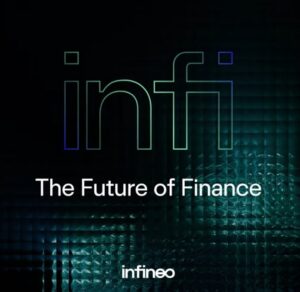
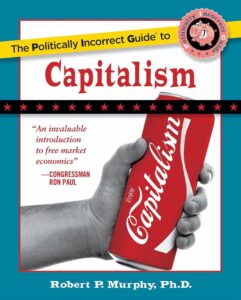
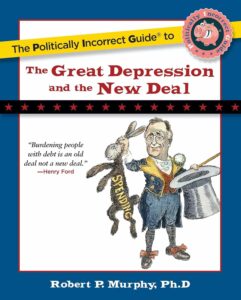
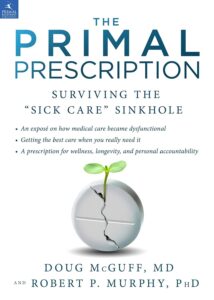
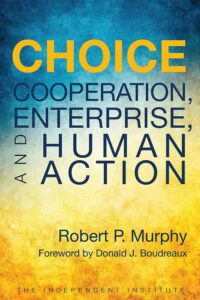
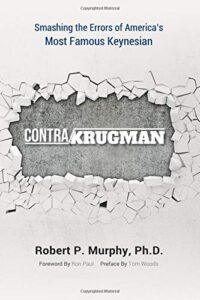
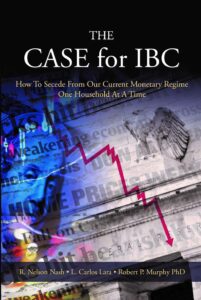
Recent Comments